Alumni Notes
Four ways to share your news
- E-mail: con.news@oberlin.edu
- Fax: Oberlin Conservatory: 440-775-5457
- Announce your concerts and recitals online: www.oberlin.edu/offcampus
- Mail clippings and high resolution (300 dpi) photos to:
Oberlin Conservatory of Music, 39 West College Street, Oberlin, OH 44074
Send us your news! We know the Oberlin community spans the globe. Please take a few moments to send news of professional accomplishments from wherever you call home.
1950s

CD release by Barbara Stein Becker
In 2007 Barbara Stein Becker ’53 released 24 Lullabies and Folk Songs, a CD featuring her arrangements of American and international songs. The idea for the project, two years in the making, grew out of her years of teaching classroom music and her passionate belief that children be exposed to the world of folk music; she realized this was the legacy she wished to leave. An award-winning composer, she has written teaching and recital pieces, rags, songs, and chamber and choral music. She has arranged and written Jewish music as well as arrangements for four books of traditional Christmas music. Barbara is composer-in-residence for the Contra Costa chapter of the Music Teachers’ Association of California and writes a column on improvisation for its state magazine. She maintains an active teaching studio in the San Francisco Bay Area.
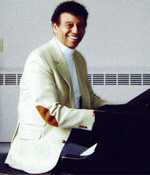
H. Leslie Adams
Composer H. Leslie Adams ’55 was a panel member at the National Endowment for the Arts in November 2008, helping to determine recipients of NEA funding. “The panel had to evaluate each submission in terms of artistic value, community service, and other criteria,” he writes. “It was a fascinating and challenging task … I learned much from this endeavor and was greatly impressed with the efficiency of the NEA in facilitating this process.” Wayne S. Brown, director of music and opera at the NEA, says that the participation of a composer on the panel “is an essential consideration for music and opera projects that are presented to the Arts Endowment for potential funding support. Newly commissioned works and the revival of relatively recent compositions are assessed by highly respected and accomplished composers.”
1960s
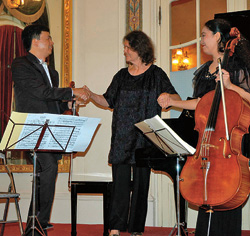
Anne Chamberlain (center)
Since 2002, pianist Anne Chamberlain ’60 has traveled to Hanoi, Vietnam, coaching and accompanying singers from the Vietnam Opera and Ballet Company (VNOB). In 2006 she founded the U.S. Friends of Chamber Music, Hanoi, to advance her efforts to help musicians develop their craft. The organization underwrites concerts, purchases materials needed for the musicians, and augments their salaries. Anne’s contributions have resulted in many successful vocal and instrumental concerts at VNOB as well as an expanded repertoire. She also presents trio concerts when she is in Hanoi, performing with violinist Ngo Hoang Linh, concertmaster of the Hanoi Philharmonic Orchestra, and cellist Tran Thi Mo, principal cellist of the Vietnam Symphony Orchestra (pictured above with Anne). When Anne is stateside, she teaches piano at Bard College at Simon’s Rock in Massachusetts and is music director at the United Church of Christ in Cornwall, Conn. Those wishing to know more about her work in Vietnam are welcome to write her at annechamberlain88@earthlink.net.
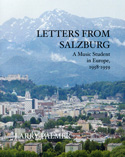
Larry Palmer ’60, professor of organ and harpsichord and university organist at Southern Methodist University in Dallas, published his youthful account of the Oberlin-in-Salzburg program in Letters from Salzburg: A Music Student in Europe, 1958-1959. The 170-page book is dedicated to fellow organ major George Calvin Hampton ’60, who died in 1984. As much a Bildungsroman as it is a window into the collective Oberlin conservatory student ethos mid-20th century, the narrative arc derives from Palmer’s letters home and is punctuated with photographs of his fellow travelers: the entire junior conservatory class. The sojourn was, as Palmer writes, “an experiment [by the conservatory] in international education,” with all third-year coursework being undertaken at the Mozarteum. The pro-gram concluded in 1964. The Class of 1960, which celebrated its 50th reunion in May, designated funds to name a room in the new Kohl Building the “Salzburg Room.” Skyline Publications issued Palmer’s book in 2007; Nanette G. Lunde ’65 is vice president of the imprint, which also published Larry’s facsimile and performer’s edition of the Sonata for Harpsichord in F Minor by Charles Wesley, based on the unique manuscript recently acquired by SMU’s Bridwell Library.
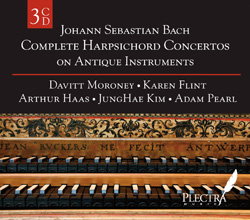
CD release by Karen Gebhart Flint
Karen Gebhart Flint ’64, noted harpsichordist and artistic director of Brandywine Baroque, an early music chamber ensemble with concert series in Wilmington and Lewes, Del., and Exton, Pa., is a member of Oberlin College’s Board of Trustees and teaches harpsichord at the University of Delaware. She has put her collection of antique harpsichords, which she began collecting in 1997, to exquisite use in the Plectra Music recording of Johann Sebastian Bach’s Complete Harpsichord Concertos on Antique Instruments, released in May 2009. Included among her collaborators on the album are JungHae Kim MM ’93, founder of Ensemble Mirable in California, and violist Amy Leonard ’88. The September/October 2009 issue of American Record Guide includes this review: “It is rare that harpsichord devotees have the chance to hear four superbly restored antique instruments in the same place. It is just this experience that harpsichordist and producer Karen Flint has orchestrated in this recording of Bach harpsichord concertos on instruments from her collection. For Flint, melody is paramount. She has a penchant for bringing out the structural notes in a melody, making it all the more memorable. She is particularly eloquent at cadences; perhaps she is the type of person who enjoys a happy ending story…. Kim plays with the imagination and whimsy of a dreamer finding pictures in the clouds.” The CD is available at www.plectra.org and www.amazon.com.
Catherine Barr ’66, an oboist with the Dallas Opera Orchestra, founded Texas Winds Musical Outreach, Inc., a Dallas non-profit organization, 25 years ago. Funded entirely through donations and contributions, Texas Winds employs 70 professional musicians, among them Laura Irvin ’81, Scott Stratton ’94, and Naoko Nakamura ’96, performing in a variety of ensembles. They present free concerts in nursing homes, hospitals, and Head Start centers throughout Dallas County; last season they presented 912 concerts. The organization was honored in November 2008 with the Excellence in Mission Achievement award by the Center for Nonprofit Management. For more information visit www.texaswinds.org. Catherine is married to Eric Barr ’67. After 33 years as principal oboe of the Dallas Symphony Orchestra, Eric retired in 2006.
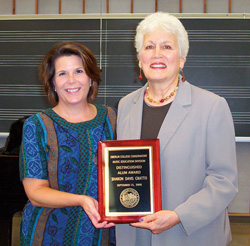
Jody Kerchner (left) and Sharon Davis Gratto
Sharon Davis Gratto ’66, pictured above with Professor of Music Education and Division Chair Jody Kerchner, was honored with the Music Education Division’s Distinguished Music Education Alumni Award in September 2008. Sharon, whose field of expertise includes multicultural choral repertoire, presented a workshop while she was in Oberlin: “World Music in the Classroom and the Ensemble: Issues and Experiences.” She is professor of music and coordinator of music education at the Sunderman Conservatory of Music at Gettysburg College in Pennsylvania, where she also conducts the women’s choir and world music ensemble.
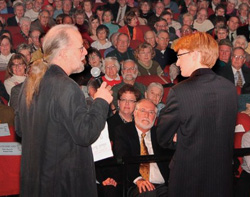
Michael Barone with his microphone
Michael Barone ’68 reports: “Organ music, and audiences for it, are very much alive!” In February 2009, Michael, host of American Public Media’s Pipedreams (www.pipedreams.org), collaborated with local American Guild of Organist (AGO) and American Theatre Organ Society chapters, public radio station WXXI-FM, and the Eastman School of Music on a weekend of “Pipedreams Live!” concert performances in Rochester, N.Y. Some 3,000 people were in attendance; standing-room-only crowds packed the programs. “A huge throng applauded David Higgs’ and Bill Porter’s ’68 stylish interpretations on the 4/23 Wurlitzer at Rochester’s Auditorium Theatre,” Michael writes. The following month Michael spearheaded a Bach Birthday Bash, a sequence of five hour-long concerts at churches packed with large and enthusiastic audiences in Saint Paul, Minn. Michael was profiled in the October 18, 2008, edition of the New York Times on the occasion of the 25th anniversary of Pipedreams.
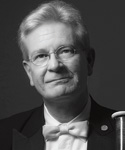
Stephen Franse
Stephen Franse ’69, considered one of Canada’s premier wind players, marked his 35th season as principal bassoonist of the Calgary Philharmonic in 2008. Throughout his career he has worked with such masters as Sir John Barbirolli, Howard Hanson, Aaron Copland, Pierre Boulez, John Cage, Blanche Moyse, and Leonard Bernstein. An active conductor and chamber musician, Stephen is an affiliate of numerous Calgary quintets and chamber ensembles—among them the CBC Strings, the Alberta Chamber Players, Heroick Musik, the Concerts Arts Ensemble, the Kensington Sinfonia, Aubade, and the Beau Quartet—he has also served as music director of the Calgary Civic Symphony and the Calgary Concert Band. For the former, he cofounded the C3 Competition in 1981. Stephen, a dedicated teacher, coach, and clinician, is currently a woodwind coach for the Calgary Youth Orchestra. His interests include pipe organ design and his collection, amassed over his lifetime, of more than 5,000 vinyl recordings.
1970s
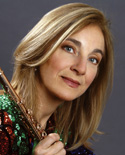
Carol Wincenc
Last season flutist Carol Wincenc ’71 celebrated her 40th year as a professional musician. The ruby anniversary was marked by performances in major New York City venues and several world premieres. Notable among them: the world premiere of Jonathan Berger’s Calcine Crown at the National Flute Association’s 2009 convention in New York City in August; a November 2009 recital at Merkin Concert Hall that featured the world premiere performance of Jake Heggie’s Fury of Light, for flute and piano; and, at the Morgan Library and Museum in February 2010, the New York debut of the trio Les Amies, featuring Carol and New York Philharmonic principal players Nancy Allen on harp and Cynthia Phelps on viola. The trio premiered Thea Musgrave’s Sunrise and Andrea Clearfield’s … and low to the lake falls home …; the latter was a memorial tribute to Carol’s parents, Joseph Wincenc ’35 and Margaret Miller Wincenc ’37. Carol, an artist faculty member at the Juilliard School and a member of the New York Woodwind Quintet, was featured on the October 2009 cover of Flute Talk in a profile written by Clinical Assistant Professor of Flute Kathleen Chastain.
Michael Philip Davis ’73 “coaxed a real feeling of intensity and passion from his mostly young performers,” (FresnoBeehive.com) in a September 2008 production of Il Tabarro at the California Opera Arts and Educational Festival. Nearly 30 years after creating the role of Peter van Daan in the original 1979 production of Michael Cohen’s musical Yours, Anne, based on the Goodrich and Hackett play Anne Frank: The Diary of a Young Girl, Michael staged the show for the New York State Theatre Institute in Troy, N.Y., in March 2009. His direction was praised in the Troy Record: Michael’s “love and affection for the material is obvious as he nurses delicate performances from the entire cast,” and the Schenectady Daily Gazette called the production “first-rate.” Michael’s most recent project was the world premiere of La Coupe et les Lèvres (The Cup and the Lips), a transformation of Puccini’s Edgar by composer and conductor Anton Coppola for the Kaye Playhouse at Hunter College in October 2009.
Sylvia Kahan ’73 was the pianist for a chamber music concert celebrating the centenaries of composers Elliott Carter and Olivier Messiaen. The September 2008 concert, presented by the CUNY Graduate Center in New York City, featured Carter’s Sonata for Violoncello and Piano and 90+, for solo piano, and Messiaen’s historic Quartet for the End of Time. Sylvia was joined on the program by violinist Olivier Fluchaire, cellist Edward Arron, and Metropolitan Opera principal clarinetist Anthony McGill. Sylvia’s critically acclaimed first book, Music’s Modern Muse: A Life of Winnaretta Singer, Princesse de Polignac, was released in paper-back (University of Rochester Press, 2009); in 2010 it appears in France as Une Muse de la musique moderne (Les Presses du réel, Dijon). Her second book, In Search of New Scales: Prince Edmond de Polignac, Octatonic Explorer (University of Rochester Press, 2009), was released in 2009. Sylvia serves on the piano and musicology faculties at the Graduate Center and the College of Staten Island, City University of New York.
Thomas Riis ’73 was named president of the Board of Trustees of the Society for American Music in 2009. Founded in 1975, the society is a non-profit scholarly and educational organization whose mission is to stimulate the appreciation, performance, creation, and study of American music, in all of its diversity, from all eras, including the full range of activities and institutions associated with American music throughout the world. Thomas is now in his 18th year as professor of musicology and director of the American Music Research Center at the College of Music, University of Colorado at Boulder.
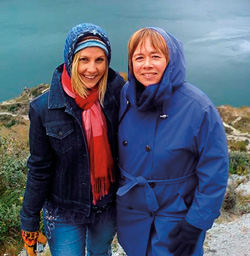
Martha Councell and Wendy Rolfe-Dunham
Flutists Wendy Rolfe-Dunham ’74 and Martha Councell ’98, pictured at right 10,000 Andean feet above Ecuador’s volcanic Lake Quilotoa crater in June 2009, were in Quito to perform and teach at the 19th Convencion Internacional de Flautistas en el Centro del Mundo. Flutist Paul Schliffer ’71 and violinist Gerald Elias ’74 joined them and other musicians from the United States, Latin America, and Europe to perform with Ecuadorean colleagues and students in the historic colonial Teatro Sucre, and at the modern Casa de la Musica. At Oberlin, Martha studied with Professor of Flute Michel Debost, and Wendy and Paul were students of Emeritus Professor of Flute Robert Willoughby.
James M. Keller ’75, long-time program annotator for the New York Philharmonic, was the Leonard Bernstein Scholar-in-Residence at the New York Philharmonic for the 2008-09 concert season. In that capacity he curated public educational programs and conducted musicological research in the orchestra’s archives. His article, “Bernstein and Mahler: Channeling a Prophet,” appears in the 2008 book Leonard Bernstein: American Original, edited by the maestro’s brother, Burton, and Barbara Haws (HarperCollins). James is also program annotator for the San Francisco Symphony. When not on one coast or the other, he enjoys cultivating his garden and communing with the resident bobcats at his home in Santa Fe, N.M., where he and his spouse, Marc Dorfman, recently celebrated their 26th anniversary.
Conductor Gustavo Dudamel is not the only newcomer at the Los Angeles Philharmonic. John Lofton ’77 began his new appointment as the bass trombonist for the philharmonic in August 2008. Prior to that John spent more than 20 years as bass trombonist for the Phoenix Symphony Orchestra; he has also toured and recorded with the Cleveland Orchestra and performed with the San Francisco Symphony. John’s interests include chamber music, opera, teaching, and working as a recording artist and record producer. As a member of Summit Brass, he tours with them throughout the U.S. and Europe and teaches at the Rafael Méndez Brass Institute.
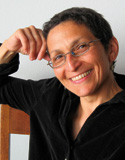
Laura Kaminsky
Composer Laura Kaminsky ’78 is the new artistic director of Symphony Space in New York City, replacing Isaiah Sheffer, who founded the performing arts center 32 years ago. In an October 5, 2009, article in the New York Times, Sheffer said that Laura “gets the idea of Symphony Space—the adventurous crossing of disciplines and a warm, friendly atmosphere in an informal but classy setting,” adding, “I just think she’s got the right spirit for it.” Although Laura majored in psychology in the college, she says she “took more music courses and spent more time in the conservatory.” She studied composition with Joseph Wood, but says that her “life-changing teacher” was Professor of Percussion Michael Rosen: “He opened up a whole world for me as a composer.” Laura’s music is performed widely—recent international performances have been in London and St. Petersburg, with a world premiere at the North Carolina School of the Arts. Laura is professor of music and faculty-at-large for the School of the Arts at Purchase College/SUNY, where she served as dean of the conservatory from 2004 to 2008. She earned a Master of Arts degree in composition from the City College of New York. More information about Laura is available at www.laura.kaminsky.com.
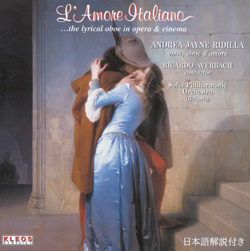
CD release by Andrea Jayne Ridilla
Andrea Jayne Ridilla ’78 is featured on L’Amore Italiano…the Lyrical Oboe in Opera and Cinema (Helicon Records, Ltd., Kleos, 2008), performing with Bulgaria’s Sofia Philharmonic Orchestra under the baton of Ricardo Averbach. The American Record Guide calls her playing “heartfelt and expressive,” and Fanfare Magazine writes that she “plays with exceptional control and a beautiful tone.” The CD is available at www.heliconrecords.com. Andrea, who has recorded three collaborative CDs with the Miami Wind Quintet and Prague Wind Quintet on the Helicon and Mastersound labels, is professor of oboe at Ohio’s Miami University and principal oboe of the Classical Music Festival in Eisendstadt, Austria. She was principal oboe of the Festival International Echternach Orchestra in Luxembourg for 16 seasons. She was granted a U.S. patent last year as inventor of the Ridilla-Heng Oboe Gouging Machine. Her article, “To Clamp or Not to Clamp?” appears in the spring 2009 issue of Double Reed News, the magazine of the British Double Reed Society.
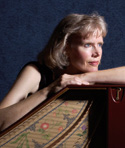
Jillon Stoppels Dupree
Recent performances by harpsichordist Jillon Stoppels Dupree ’79 include those with Dutch recorder virtuoso Marion Verbruggen at the Abbey Bach Festival in Oregon, and with Belgian viola da gamba master Wieland Kuijken in Seattle. In 2009 Jillon, who is the founding director of Seattle’s Gallery Concerts early music series, celebrated its 20th anniversary as a leading presenter of baroque, classical, and romantic music. Jillon also taught master classes at the Cornish College of the Arts and the University of Washington, and served as harpsichord faculty for the Accademia d’Amore Baroque Opera workshop. She recorded Philip Glass’ Harpsichord Concerto for his 2006 release The Concerto Project Vol. II (Orange Mountain Music); Allan Kozinn of the New York Times called her performance of the work “superb.”
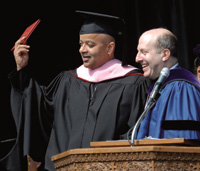
James McBride
Award-winning author and musician James McBride ’79, hon. ’08 adapted his first novel, Miracle at St. Anna, for the screen; Spike Lee directed the film, which was released in September 2008 by Disney/Touchstone and is now available on DVD. His newest novel, Song Yet Sung (Riverhead Books 2008), like Miracle at St. Anna, is a work of historical fiction for which he has written the screenplay, and which Spike Lee will direct. James returned to Oberlin in October as the featured speaker for the annual Friends of the Library dinner and appeared at the Apollo Theater with filmmaker Jonathan Demme, who is making a documentary about the recording of James’ 2003 jazz/R & B project for Cuddy, “The Process.” James also spoke with jazz studies students at a brunch while he was on campus. His 1996 best-selling memoir, The Color of Water, is considered an American classic and is read in schools and universities across the country.
Conductor Michael Morgan ’79 returned to campus in April 2009 to participate in “Call & Response: Black Music and the Community,” a conference presented by the Oberlin College Black Musicians’ Guild. Associate Professor of Art and African American Studies Johnny Coleman is the group’s advisor. He says that Michael spoke about his time as an Oberlin student and his growing awareness of the difference he could make in the community. “Michael spoke about his path to becoming a kind of catalyst for bringing black students to their own passion for classical music in particular and music in general,” says Coleman. Violinist Danielle Taylor ’10, president of the organization in 2008-09, was instrumental in organizing the conference and assembling all of the participants, who also included Monica Ellis ’95, bassoonist with Imani Winds. Last season Michael celebrated his 20th year as music director of the Oakland East Bay Symphony in California.
1980s
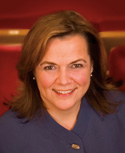
Allison Vulgamore (photo by JD Scott)
Allison Vulgamore ’80 launched her career as an assistant to the executive director of the Philadelphia Orchestra nearly 30 years ago. In February 2010, her name went up on the front office door when she began her duties as president and CEO of the Philadelphia Orchestra Association. Allison joined the orchestra following 16 years as president and CEO of the Atlanta Symphony Orchestra. “She is a visionary leader with a proven track record of success in Atlanta who cares passionately about classical music and the role of an orchestra in its community,” said Philadelphia Orchestra Chairman Richard B. Worley in a press release. “She was the unanimous choice of the search committee, and I look forward to working closely with her.” In her official statement, Allison said: “I am honored to accept this position with … one of the world’s truly great orchestras. I am coming to Philadelphia to help make a difference at a time of transformation and great creativity, and I am eager to work hand-in-hand with the musicians, the members of the board, the staff, volunteers, and the community to help shape the next legacy era for this extraordinary ensemble.”
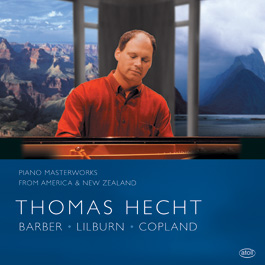
CD release by Thomas Hecht
Thomas Hecht ’82, head of piano studies and one of the founding faculty members, in 2003, of the Yong Siew Toh Conservatory of Music at the National University of Singapore (NUS), received the university’s first tenured music professorship in 2009. He is the first pianist in the Republic of Singapore to be so honored. In addition to teaching and giving master classes, Thomas has served on the jury panels of the Geneva, Gina Bachauer, and Ibiza international piano competitions and the national piano competitions of Japan, Thailand, Australia, and South Africa. An acclaimed soloist, chamber musician, and member of the award-winning duo-piano team of Hecht & Shapiro, Thomas has appeared at prestigious venues and with leading orchestras on five continents. He has recorded for Azica Records and National Public Radio, among others. His most recent CD, Piano Masterworks from America & New Zealand, is available on the Atoll label.
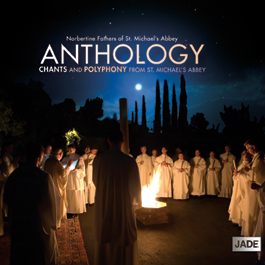
CD release by Jerome Molokie
Father Jerome Molokie ’83, director of development for the Norbertine Fathers of St. Michael’s Abbey in Orange County, Calif., appears with other members of the order on its first commercial album. Released in 2008, Christmas at St. Michael’s Abbey (Jade) features Gregorian chants for the three Masses of Christmas and was recorded in the abbey church. Jerome, music director at the abbey from 1994 to 2007, was interviewed by the Orange County Register in August 2008: The album “was just a ‘ma and pop’ kind of CD we made,” he said. “We gave it to friends and then we put it in our own store.” According to the article, when interest in the CD intensified, Milan Records, which owns the Jade label, agreed to release the CDs internationally. In January 2009, the label issued a second CD, Anthology: Chants and Polyphony from St. Michael’s Abbey. Both albums are available at www.monasterygreetings.com. On a secular note, Jerome is a co-dedicatee of Dean Koontz’s novel The Darkest Evening of the Year (Bantam, 2007). Koontz’s encomium acknowledges Jerome’s “many kindnesses … good cheer … friendship … and … inspiring devotion to what is first, true, and infinite.”
1990s
In June 2008, Janna Baty ’90 originated the role of pioneering theatre impresario Laura Keene in the world premiere production of Our American Cousin, a new opera by Eric Sawyer and John Shoptaw based on the last night of Abraham Lincoln’s life. It was staged at the Academy of Music Theater in Northampton, Mass., and released as a recording on the BMOP/Sound label by the Boston Modern Orchestra Project. Janna is now in her second year of teaching at the Yale School of Music, where she runs the Undergraduate and Graduate Secondary Voice Lessons Program. Also in 2008 she went on tour to England with Boston’s Longwood Symphony Orchestra, singing Barber’s Knoxville: Summer of 1915 in a series of concerts to benefit the Marie Curie Cancer Institute. She studied Portuguese and conducted research at the Museu Villa-Lobos in Rio de Janeiro, Brazil, as part of a Marion and Jasper Whiting Fellowship.

CD release by Jason Jackson
Trombonist Jason Jackson ’93, a member of the Vanguard Jazz Orchestra for 11 years [see page 7], is also the lead trombonist in the Dizzy Gillespie All Star Big Band, directed by Slide Hampton, and Roy Hargrove’s Big Band. On Broadway, Jason has played in the pit for many Tony Award-winning shows, The Color Purple, Wonderful Town, Cats, The Producers, Spamalot, and the revivals of South Pacific, A Chorus Line, and Chicago among them. His first recording as a leader, Going Home, was released in 2002 on Jacemus Records.
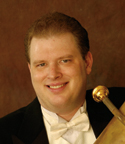
J.c. Sherman
In September 2008, J.c. Sherman ’94 premiered a new concerto for tuba by Canadian composer Victor Davies at Christ Church Cathedral in Vancouver, B.C. Concerto for Tubameister is a 22-minute work in three movements, one of which, “Waltz for Franco,” was named for J.c’s son. J.c is the principal tubist for Opera Cleveland and the Firelands Symphony Orchestra. As a freelance musician specializing in low brass, he has performed with the Cleveland Orchestra, the Blossom Festival Band, the Heritage Brass Quintet, and the Cleveland Chamber Symphony, among others. In addition to performing, J.c. is an instrument technician at Academy Music and works in development at the Cleveland Pops Orchestra.

CD release by Lee-Chin Siow
Violinist Lee-Chin Siow AD ’95, director of strings and professor of violin at the College of Charleston in South Carolina, has won praise for her debut album, Songs My Father Taught Me, which topped the HMV classical music chart within a month of its release in her native Singapore earlier this year. “What distinguishes her from the competition is the immediacy and sincerity of her artistry—the kind that instantly grabs attention and turns heads,” writes the American Record Guide. “The sound she draws from that Guadagnini is enormous, sumptuous, rich in every register, reminiscent of David Oistrakh at his peak and the color of dark amber.” Lee-Chin launched the CD in the U.S. at the opening recital of the Spotlight Concert Series in the 2009 Piccolo Spoleto Festival in May; the concert attracted a capacity audience that gave her a standing ovation. She celebrated the CD release in Singapore with a sold-out gala charity concert that was held at the 1,600-seat Esplanade Concert Hall, one of Asia’s most sought-after concert venues. Dedicated to her father and first teacher, violinist Hee-Shun Siow, the album features classic melodies and violin showpieces; the title is a play on Antonín Dvorák’s Songs My Mother Taught Me. The album, and more information, is available at www.leechin.com.
Ben Lapidus ’95 published Origins of Cuban Music and Dance: Changüí (Scarecrow Press) in October 2008. The book, which is the first in-depth look at the ethnomusicology of one of Cuba’s least studied musical traditions, positions changüí (a style analogous to the blues in the U.S.) as an antecedent to son Cubano, and addresses the cultural intersection between memory, performance, and identity in the Latin American academic discourse. By emphasizing the structure of Eastern Cuban music alongside a detailed exploration of historical musical trends, Ben highlights the complex relationship between history and music in what David F. Garcia, assistant professor of ethnomusicology at the University of North Carolina at Chapel Hill, calls “an indispensable text.” Ben discussed the book, along with his other musical passions, in an April 2008 interview with Jazz.com. He is assistant professor of music at John Jay College of Criminal Justice.
An alumni note for tenor Chris LeCluyse ’95 that appeared in the 2008 issue of this magazine announced his solo turn with the choir Conspirare on a 2008 Harmonia Mundi recording of Tarik O’Regan’s music. The album, Threshold of Night, received nominations in 2009 for two Grammy Awards—Best Choral Performance and Best Classical Album. Chris continues to teach English and to direct the writing center at Westminster College in Salt Lake City. He recently co-founded Utopia Early Music.
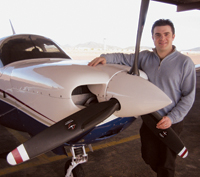
Michael Christie
(photo by Symphony Magazine)
Conductor Michael Christie ’96 was featured on the cover of the January/February 2009 issue of Symphony magazine. The article, “Frequent Flyer,” highlights his posts with orchestras around the world and emphasizes the ways in which a commitment to outreach and local performing arts, repertoire expansion, and experimental concert formats has helped the institutions that he leads achieve success. Michael currently holds music directorships with the Brooklyn Philharmonic, the Phoenix Symphony, and the Colorado Music Festival. Despite his triumvirate of professional duties, he found time in October 2008 to return to Oberlin for the 40th anniversary of the Northern Ohio Youth Orchestra (NOYO), where he led the young musicians in a rehearsal and concert; taught conducting classes for Music Director of the Oberlin Orchestras Bridget-Michaele Reischl and Professor of Music Education Joanne Erwin; and took the Oberlin Orchestra through its paces in a rehearsal of Sibelius’ Symphony No. 1. How is Michael able to manage all of this far-flung conducting? A pilot’s license and a love of flying help him stay connected—not only to the podium, but also to wife Alexis and daughter Sinclair, born in 2008. The magazine cover shows him with his single-engine Mooney four-seater.

Matthew Hinsley
In 2008, classical guitarist Matthew Hinsley ’96 published his first book, Classical Guitar For Young People, which forms the basis for instruction at the University of Texas at Austin Guitar Project. Matthew has directed the Austin Classical Guitar Society (ACGS) for 13 years and reports that the organization has grown to become the largest of its kind in America—it presents major concert series and engages in performance and educational outreach. The ACGS published its middle-school and high-school classroom classical guitar curriculum (www.GuitarCuriculum.com), a collaborative project four years in the making between Matthew and the ACGS director; it is now being used internationally. Also in 2008, Matthew personally raised more than $1 million in funds for classical guitar programming in Central Texas. He lives in Austin with his wife of 12 years, Glenda, and enjoys a rich life of teaching, performing, arts administration, and non-profit consulting—with plenty of tennis mixed in.
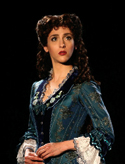
Marni Raab
Marni Raab ’96 was under contract to perform the role of Christine Daaé in the U.S. tour of Phantom of the Opera in summer 2008 when the actress portraying the role on Broadway requested maternity leave. Marni was asked to leave her tour contract and perform the highly sought-after role with the Broadway company for 10 months; she remains on Broadway as the Christine alternate, playing two shows per week and standing by for the remaining six. Marni studied with the late Wheeler Professor of Singing Richard Miller.
Big changes this past year for Matt Shulman ’96. For one thing, he is now known professionally as Matt Von Roderick; his middle name is now his last name. He has also moved from the East Coast to Los Angeles. Matt and his band backed the legendary Neil Diamond for a performance at New York University’s Skirball Center in March 2009. His new album, Matt Von Roderick, was slated for a spring 2010 release through Jaggo Records/Universal. Catch up with the trumpeter/singer-songwriter that All About Jazz calls “an amalgamation of Miles Davis and Radiohead” at www.mattvonroderick.com.
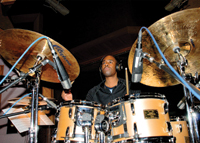
Neal Smith
“Why are so many good jazz gigs led by drummers these days?” asks Ben Ratliff, New York Times jazz critic. He framed his query around a review of Neal Smith’s ’96 August 2009 performance at the Manhattan club Smalls. Neal took the trio that he assembled last spring (he on drums, Dezron Douglas on bass, and veteran pianist Mulgrew Miller—along with saxophonists Steve Wilson and Eric Alexander and guitarist Mark Whitfield) through what Ratliff called “no-nonsense post-bop rhythm … [and] he “kept the swing strong and clear … his set made you feel that jazz as a traditional language is safe and sound.” The set also included the late Professor of African American Music Wendell Logan’s Remembrances, a ballad that Ratliff called “stylish and mysterious.” Neal lives in Manhattan but commutes to Boston, where he is an associate professor at Berklee College. A live recording of the Smalls performance, Neal Smith New York Five Live at Smalls, is forthcoming. He and his wife, Katherine Banucci ’96, have two sons. More info at www.nealsmithjazz.com.
Jason Hardink ’97, principal keyboard of the Utah Symphony, was named the new artistic director of the Utah-based NOVA Chamber Music Series in November 2008. “Jason is one of my finest musical colleagues here,” Jason’s predecessor at NOVA told Celia Baker of the Salt Lake Tribune. “I have to say that I think the best and brightest years for NOVA are the ones coming up.” Jason took up his post at the end of the 2008-09 season. He earned a Master of Music degree in piano performance and a PhD in 2006 from Rice University. He is married to Kimi Kawashima ’98.
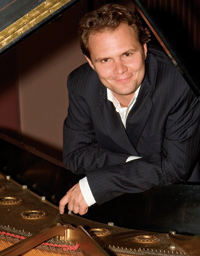
Thomas Rosenkranz
Pianist Thomas Rosenkranz ’99 recently returned to Tunisia as an artistic ambassador sponsored by the U.S. State Department. He was in residence at the Sousse Institute de Musique and presented a weeklong master class course on interpretation and on improvisation. He also completed a solo tour of China, Taiwan, and Inner Mongolia, making stops in Dalian, Shenyang, Shanghai (as part of Shanghai New Music Week), Tongliao, and Dashiqiao, where he presented the first public piano recital in the history of the city. He also performed at the International House of Tokyo. He is currently touring Olivier Messiaen’s Vingt Regard sur l’Enfant Jesus with numerous performances throughout the U.S. and abroad over the next two years. He continues to serve on the summer artist faculty of the SoundScape Festival in Italy with soprano Tony Arnold ’90, and he recently joined the piano faculty at Bowling Green State University in Ohio.
2000s
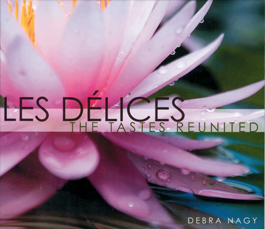
CD release by Debra Nagy
In 2006 baroque oboist Debra Nagy ’00, MM ’02 founded Les Délices, an ensemble specializing in historically informed performances of French baroque chamber music. Les Délices released its debut CD, The Tastes Reunited, last year, and tracks from the disc were featured in the audio guide to the exhibition “Watteau, Music, and Theater,” on view in fall 2009 at the Metropolitan Museum of Art. Debra is joined on the CD by, among others, Emeritus Professor of Harpsichord Lisa Goode Crawford and viola da gamba player Emily Walhout ’83. The ensemble’s performances of trio sonatas by Couperin and Clérambault are based on manuscript sources from the 1690s, when the style was fresh and still controversial. Also included is the premiere recording of a suite for oboe and basso continuo by François Chauvon, a student of Couperin’s. Laura Kennelly of CoolCleveland.com wrote that the album’s instrumentalists ”produced a vivid and lively recreation of a brilliant era.” The CD can be purchased on CDBaby.com and on iTunes; visit lesdelices.debranagy.com to learn more.Debra, who is also a member of the Los Angeles-based medieval ensemble Ciaramella, is a lecturer in early music performance practice at Case Western Reserve University.
Violinist Hristo Popov ’00 toured Eastern and Central Europe during the 2008-09 season, performing the Brahms “Double Concerto” with New York cellist Kalin Ivanov. Their final performance, with the famed Prague Sinfonietta, took place at one of Europe’s most illustrious venues, the Dvorák Hall at the Rudolfinum. “Expertly played,” noted a review in the Strad about a performance of Dvorak’s “Dumky” Trio by Hristo’s chamber ensemble, the New York Empire Trio, at Carnegie Hall’s Weill Recital Hall. Their account of Haydn’s Trio in D was “alert and energetic … the effect was rollicking.”
Percussionist David Schotzko ’00 was singled out for praise in Allan Kozinn’s New York Times review of Iannis Xenakis’ opera Oresteia, which received its American premiere in September 2008 at Columbia University’s Miller Theater. David is program director and founding percussionist of the Oberlin-formed International Contemporary Ensemble (ICE), which served as the pit orchestra for the production. Kozinn wrote that David provided the opera’s soloist “with magnificent support … [he] had plenty to do through the rest of the score as well, where the percussion is prominent in an ensemble of woodwinds, brass, and a single cello.” David has studied and worked with many renowned composers, among them Tan Dun, Steve Reich, and Oberlin’s Distinguished Visiting Professor of Composition and Composer-in-Residence David Lang. ICE’s David lives in Brooklyn.
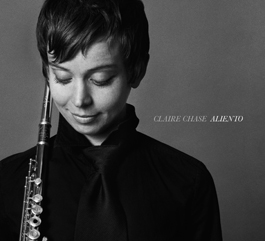
CD release by Claire Chase
Flutist Claire Chase ’01, co-founder of the International Contemporary Ensemble, won the prestigious Concert Artists Guild (CAG) competition for 2008 and with it, entrée onto the CAG artist roster. Claire is enjoying a two-year management contract, won the $5,000 Victor and Sono Elmaleh Award, and performances on CAG’s two concert series in New York City. Some 350 applicants submitted recordings for the CAG award; only 11 finalists were invited to perform a 20-minute recital program in October 2008 at the Kosciuszko Foundation in Manhattan. David Garland featured Claire during an hour-long interview on WNYC’s Ear-to-Ear in November 2008. Claire’s debut CD, Aliento, was released in October 2009 on New Focus Recordings, and features world premieres of new flute works by such composers as Jason Eckardt, Marcelo Toledo, and Du Yun ’01. Members of ICE’s string section (violist Wendy Richman ’01 and cellist Kivie Cahn-Lipman ’00) perform on Eckardt’s 16.
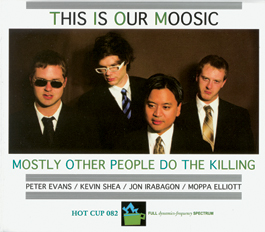
CD release by Matthew “Moppa” Elliott
Bassist and composer Matthew “Moppa” Elliott ’01 and trumpeter Peter Evans ’03 have released two more albums with their New York-based quartet, Mostly Other People Do the Killing (MOPDTK), both on the Hot Cup Records label. Shamokin!!! (2007), named after a town in Elliott’s native Pennsylvania, and with liner notes by “Leonardo Featherweight,” showcases MOPDTK’s contemporary take on jazz and improvised music—a style they like to call “über-jass.” Elliott told a writer with the Pittsburgh Tribune Review that the band’s name derived from a book he read by a former Stalinist; the bureaucrat dismissed questions of guilt by saying, “Mostly other people do the killing.” This is Our Moosic, at once homage to Ornette Coleman and yet another Pennsylvania town, was released in 2008; Nate Chinen of the New York Times called it “one of the more feverishly exuberant jazz albums in recent memory” in his review of MOPDTK’s August 2009 sets at Zebulon in Brooklyn. He also praised the classically trained Evans as “a superhuman technician,” and Elliott’s acoustic playing as exerting “a robust physical presence.” Time Out New York writes: “Elliott offers a humbly progressive blueprint for the future of jazz.”
Soprano Ellie Dehn ’02 was Freia in Das Rheingold and Gerhilde in Die Walküre in the Los Angeles Opera’s first complete staging of Wagner’s Der Ring des Nibelungen, directed by Achim Freyer at the Dorothy Chandler Pavilion. She sang both roles in 2009, and reprised them in June 2010 when LA Opera presented the entire cycle. Of her February performance as Freia, L.A. Splash wrote that she played the character “soulfully.” Ellie was in Munich in fall 2009, singing Donna Anna in a new production of Don Giovanni at the Bayerische Staatsoper. More information about her upcoming roles, including two La Bohème heroines—Mimi with Minnesota Opera and Musetta at the Metropolitan Opera—can be found at www.elliedehn.com.
Baritone Frederick Jackson ’02 was invited to join the Zürich Opera’s International Opera Studio for the 2007-08 season, where, he writes, he performed in several productions and received “first-class” training: “In my work with Thomas Barthel and Francisco Arazia, I found the repertoire that works best in my voice.” In summer 2008, he joined the Harlem Opera Theater’s touring production of Porgy and Bess, performing in Hamburg, Baden-Baden, and Zürich. Later that year, he sang with Alvin Ailey American Dance Theater’s production of Revelations. In 2009 he joined New York City Opera to perform in a concert production of Troubled Island by William Grant Still ’20, hon. ’47 (1895-1978) and to play the role of Nelson Mandela in Chandler Carter’s No Easy Walk to Freedom, the latter as part of City Opera’s showcase of American operas. Another tour of Porgy and Bess with Harlem Opera Theater last summer took him to Sicily.
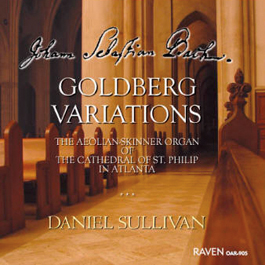
Daniel Sullivan
During the 2008-09 academic year, Daniel Sullivan ’02 designed and taught a new undergraduate organ literature class at the Juilliard School. In 2008 Raven Compact Discs released his CD recording of Bach’s Goldberg Variations played on the organ; American Record Guide (Nov/Dec 2008) wrote: “If you like the Goldbergs enough to buy more than one recording, this one should be on your must-have list.” In 2007, he and Jason Cutmore ’02 co-founded the New York Piano-Organ Duo; both artists are represented by Phillip Truckenbrod Concert Artists.
The August issue of Opera News reported that mezzo soprano Elizabeth DeShong ’03 spent the fall of 2009 singing the Page in San Francisco Opera’s production of Salome, and wrote that her turn as Suzy in the Metropolitan Opera’s staging of La Rondine during the 2008-09 season (her Met debut), “sounded freshest” among Magda’s circle. Across the pond, London’s Guardian praised Elizabeth’s U.K. debut as Hänsel in the Glyndebourne Opera Tour’s production of Hänsel und Gretel, writing that her “gleaming mezzo makes her one to watch.”
Violinist Hong-Yi Mo ’04 joined the Detroit Symphony Orchestra (DSO) at the start of the 2008-09 season. Prior to joining the DSO, he studied with New York Philharmonic Concertmaster Glenn Dicterow and Associate Principle Lisa Kim at the Manhattan School of Music’s Orchestral Program.At Oberlin, he studied with Professor of Violin Milan Vitek and served as concertmaster of the Oberlin Orchestra. Hong-Yi Mo has also been concertmaster of the Bowdoin International Music Festival, the Manhattan Chamber Sinfonia, and the Manhattan Symphony. He earned a master of music degree from Yale University.
In 2009 Patrick Connolly ’05 was appointed director of development for the Golandsky Institute, Princeton University’s center for the study and dissemination of the Taubman approach to music performance. Professor of Piano Robert Shannon introduced Patrick to the method, which utilizes the study of physiology in enabling musicians to overcome technical and artistic limitations as well as cure and prevent playing-related injuries. Last summer Patrick performed with Pulitzer Prize-winning composer Yehudi Wyner at the Golandsky Institute’s International Piano Festival. Patrick was a semi-finalist in the 2007 Concert Artists Guild competition.
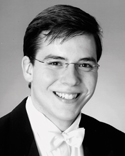
James Feddeck
Music Director Franz Welser-Möst appointed James Feddeck ’05 assistant conductor of the Cleveland Orchestra and music director of the Cleveland Orchestra Youth Orchestra in March 2009. James joined the conducting staff in September, at the start of the 2009-10 season at Severance Hall. (He gave Cleveland audiences a taste of things to come last August, when he conducted Mendelssohn’s “Fair Melusina” Overture, on a program led by David Zinman ’58, at Blossom Music Center.) As assistant conductor, James holds the Elizabeth Ring and William Gwinn Mather Chair. In addition to providing assistance to Welser-Möst, he conducts education and family concerts, Christmas concerts, and a Blossom Festival concert, and serves as cover conductor for Severance Hall and Blossom Festival subscription concerts. James also worked with David Zinman last summer in Aspen as assistant conductor for the Aspen Music Festival and School; David was music director from 1998 until this year. In an article that appeared in the Aspen Times, David said: “[James is] a highly intelligent and musical guy. I think he has a great career ahead of him.” It appears that the George Solti Foundation U.S. would agree; in 2009 the foundation honored James with a career assistance award.
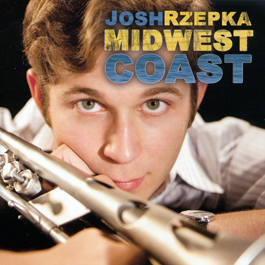
CD release by Josh Rzepka
Midwest Coast, the debut disc by trumpeter Josh Rzepka ’06, was released in 2009 and features performances by Professor of Jazz Studies and Double Bass Peter Dominguez. The album, recorded at SUMA Studios, includes nine original tunes—among the first Josh has written. A CD release party was held at Nighttown in Cleveland Heights, and Rzepka, a native of Akron, received considerable local press. In the album’s liner notes, jazz broadcaster Dan Polletta, of public broadcasting’s WCPN and WVIZ, writes: “A musician demonstrating this keen a level of maturity and understanding of jazz can only bring us more great sounds.” Next time around, those “great sounds” will be classical: Josh plans to record an album featuring baroque and classical pieces performed with chamber orchestra. He is enrolled in the Master of Music program, in trumpet performance, at Boston University.
Anne Marie Christensen MM ’07 writes that she was “likely the first Oberlin alum to be accepted on the European Union Baroque Orchestra tour,” which took her to “very diverse concert venues” in the U.K., Luxembourg, Estonia, Latvia, Romania, France, Germany, and Finland. She says that the Master of Music degree that she earned in historical performance qualified her to pass the 2008 audition course in Echternach, Luxembourg. “The ideals of the orchestra—to bring together very different people to make a unity and learn together—are not too dissimilar to the ideals of diversity adhered to at Oberlin,” writes Anne Marie. She now lives in London, where she works as a freelance baroque violinist and is pursuing a Doctor of Music degree at the Royal College of Music.
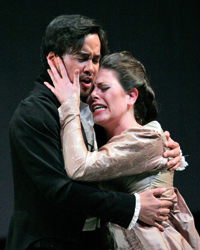
Jennifer Forni, with Aaron Agulay
Lyric soprano Jennifer Forni ’07, a member of the Portland Opera Studio Artists Program for 2009-10, was profiled in the August 2009 issue of Classical Singer magazine. Greg Waxberg’s article focused on an unexpected turn in Jennifer’s recent experience as a Young Artist at Santa Fe Opera, where she received a 2008 Apprentice Award. Jennifer was covering Nannetta in Falstaff when, “with the antepenultimate performance one day away, she received a phone call saying ‘Jennifer, we need you to sing Nannetta tomorrow night.’” Her turn was so successful that she was asked to sing the final two performances. “When they entrusted me with the rest of the run of Falstaff,” she reported, “I felt really honored. I still think back to that first Saturday night performance as one of the greatest moments in my life thus far.” Among the photographs illustrating Classical Singer’s profile is one with baritone Aaron Agulay ’06, taken when the two co-starred in Tchaikovsky’s Eugene Onegin at the University of Maryland School of Music, where both earned their Master of Music degrees. At Oberlin, they shared the stage in the 2005 Opera Theater production of Dialogues of the Carmelites.
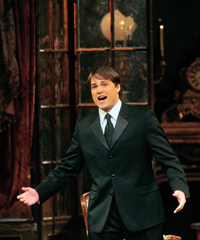
Alek Shrader (courtesy of the Metropolitan Opera)
Tenor Alek Shrader ’07, winner of the 2007 Metropolitan Opera National Council Auditions, was featured in a behind-the-scenes documentary film about the famed competition. Under the auspices of the Met Opera’s series of high-def opera presentations, The Audition was screened nationally in more than 400 movie theaters in April 2009, with subsequent screenings in Australia, Canada, Japan, Puerto Rico, South Africa, and the U.K. The Audition is available on DVD at the Metropolitan Opera Shop (www.metopera.org) and on Amazon.com. PBS broadcast the documentary in January 2010. In his Plain Dealer review, Donald Rosenberg called the film “exhilarating and poignant,” writing that “sweet-natured” Alek threw “caution completely to the wind and nail[ed] the nine high C’s in Tonio’s aria from Donizetti’s The Daughter of the Regiment.” Alek, a Cleveland native, was home in March 2009 to star as Count Almaviva in Opera Cleveland’s production of The Barber of Seville. “Shrader sailed through Almaviva’s virtuosic material and made a jovial thing of the various disguises,” wrote Rosenberg in a review. As part of the Met’s 2009 summer recital series, Alek, one of the company’s “best young prospects,” according to Steve Smith’s blog Night after Night, repeated his now-famous vocal pyrotechnics in “Ah! Mes amis.” The high C, wrote Anthony Tommasini in the New York Times, “is Mr. Shrader’s money note, and the audience went wild after his full-voiced final one.”
Flutist Brandon Patrick George ’08 returned to Dayton in March 2009 to perform Mozart’s Concerto No. 1 with the Dayton Philharmonic Orchestra for two concerts. He says that aside from the fact that this was a great opportunity for a young artist, the performances held more personal significance for him. As a young musician, he received scholarships from the philharmonic, training and mentoring from its members, and he performed with the youth philharmonic. The orchestra hosted a reception for him following the concert. Also in 2009, Brandon won the concerto competition at the Manhattan School of Music, where he is pursuing a Master of Music degree.
Thinking Denk
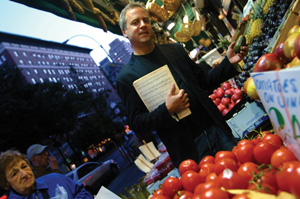
(photo by Dennis Callahan)
At the height of election season in 2008, classical pianist Jeremy Denk ’90 published in his blog Think Denk a purported interview with Sarah Palin on the subject of Beethoven’s “Hammerklavier” Sonata, which the then governor calls “the most maverickyest” of the mavericky composer’s works. Among other golden nuggets, Palin opines that “a composer is a lot like a musicologist, except that he has actual notes to put down on paper”; rails against “immigrant notes” that try to sneak across the border of B-flat major; and provides advice on performing the ferociously difficult final movement: “Trill, baby, trill!”
By an amazing coincidence, Denk was himself hard at work at the time on this very sonata, which he soon performed on tour paired with another titanically challenging piece, Charles Ives’ “Concord” Sonata, to rapturous acclaim. Joan Reinthaler of the Washington Post wrote: “Both of these pieces must score way up there on the notes-per-page scale, and Denk has the chops to muscle his way through them without breaking a sweat. What made his performance so compelling, however, were the intelligence, lyricism, and transparency that illuminated everything he touched.” Both New York magazine and the Boston Globe named the recital one of the top 10 classical events of 2008.
Scintillating writing on one hand, elegant, incisive musicality on the other: Jeremy Denk has, over the past decade, become widely admired and celebrated for both. If he is not yet a household name, he seems clearly on the way to becoming one. As a recitalist, as an international soloist (with the Philadelphia Orchestra, the San Francisco Symphony, the London Philharmonia, the Atlanta Symphony, and the Orpheus Chamber Orchestra, among many others), and as a chamber musician (he’s a regular at the Bard and Spoleto festivals), he evokes superlatives from audiences and critics alike. The New York Times called his Bartók “bracing, effortlessly virtuosic, and utterly joyous,” his Mendelssohn “tenderness personified,” his Chopin “deliriously spontaneous-sounding,” his Goldberg Variations “entrancing from the first notes . . . one of the best solo performances this year.”
Denk’s blog provides clues to the roots of his success. Although Alex Ross in the New Yorker termed him “perhaps the leading humorist-intellectual of the classical-music blogosphere,” Think Denk—ironically subtitled “the glamorous life and thoughts of a concert pianist”—offers a good deal more than waggish humor. Hilariously obsessed as he may be with “airporty days,” overcaffeinated nights, and the mysteries of the cell phone, he’s also keenly thoughtful about, say, time, memory, and the Dionysian mysteries. Phenomenally well-read (he’s besotted with Proust, Balzac, Beckett, and Barthes, among others) and deeply curious about the world, Denk has the sort of associative imagination that seems to yield effortless insight. The blog wanders up alleyways that lead to shimmering vistas: an entry about being at the mercy of an insane taxi driver on a rainy night, for instance, can end with a meditation on the depiction of fluidity in the “Archduke” Trio that is haunting and profound.
Indeed, it’s the posts of musical analysis that most readily reveal his distinctive combination of powerful intelligence with passionate humanism. Uncannily, he allows even non-musicians to feel what it’s like to play the music—no, to be inside the music—to a thrilling, visceral degree. If you want to know about the tension between will and desire in Beethoven’s 4th and 5th concertos (by way of an analogy with Rice Krispie treats), or about the way Schumann builds “a cosmos out of tenuous flashes” in his Märchenbilder, Denk’s your man. It is precisely this interpretive brilliance, this ability to translate notes into profound experience, that critics praise in his playing.
None of this should surprise those of us who knew Jeremy as an undergraduate. When asked about the value of the double-degree program, it’s usually Jeremy I tout as my prime example. He arrived in Oberlin at the age of 16 and completed degrees in both piano and chemistry in four years, as opposed to the usual five. (I can attest that he also did stellar work in multiple classes in modern literature. If music hadn’t worked out for him, he’d have made a splendid English professor.) Before the age of 30 he had earned a master’s degree from Indiana and a doctorate from Juilliard, made his New York recital debut at Alice Tully Hall, won the Young Concert Artists International Auditions, and received an Avery Fisher Career Grant. Shortly thereafter, he resigned a tenure-track position at Indiana in order to devote himself to a freelance career.
Since 2004, Denk has toured in recital with violinist Joshua Bell. The New York Times called them “an ideally matched duo, with Mr. Denk’s fiery playing complementing Mr. Bell’s luxuriant singing tone.” Their sold-out performance on February 3, 2010, was a highlight of last season’s Artist Recital Series.
A Passion for Singing: David Miller and Il Divo
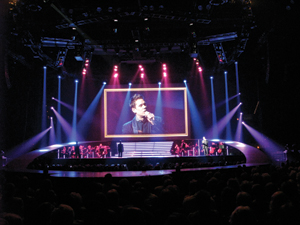
(photo by John Soeder/the Plain Dealer)
The roar of the crowd intensified as the four men, dressed to the nines in dark Armani suits, sauntered down a flight of illuminated steps onto the stage and into the spotlights. As they raised their voices in a steady crescendo of four-part harmony, multicolored beams of light panned the arena, coming to rest on David Miller ’95, who lifted his microphone and took his first solo of the night as a tenor with Il Divo.
Since pop impresario Simon Cowell brought them together in 2004, Il Divo has sold more than 22 million albums and topped charts in 26 countries, pioneering a new sound that marries operatic technique with popular appeal. At their concert in Cleveland last summer, they sang Bernstein’s Somewhere and a Spanish version of the oft-covered (Johnny Mathis, Toni Braxton, Nina) Unbreak My Heart. During intermission, fans lined up to buy merchandise (t-shirts, mugs, keychains—even opera glasses) bearing the group’s image. Although three of the singers, including Miller, are operatically trained, the atmosphere at an Il Divo concert is more reminiscent of Beatlemania than a night at the Met.
It all started with a mysterious telephone call. An anonymous producer “put out a worldwide APB to opera agencies, looking for opera singers who were interested in using their voices in a nontraditional way,” recalls Miller. He was one of the 17,000 vocalists who responded from more than 17 countries worldwide. “I just went to the audition like it was any other audition,” he says. He’s not certain what Cowell saw or heard in his voice—the range, color, emotion—but he was the fourth and final singer asked to join the group shortly thereafter, in December 2003.
When interviewed for this story several months prior to the Cleveland concert, Miller was in the midst of another world tour with Il Divo. In the previous two weeks, he had performed in Portugal, Spain, Belgium, Germany, Slovenia, Serbia, Austria, and Italy, singing for thousands of fans. “There’s a certain amount of stress,” Miller acknowledged coolly, “but there are ways to counter that.” His preconcert ritual includes a few vocal warm-ups, a light meal, and some yoga poses.
It was this levelheaded approach that first brought Miller, as a high school student, to singing. “I wanted to be a pilot or an astronaut, but I got too tall to fit in the cockpit,” says Miller, who, at 6’3”, is the tallest Divo. “I thought, ‘Okay, well, what am I going to do now?’” The director of the school musical, facing a dearth of male cast members, heard Miller’s voice and recruited him immediately. He’s been singing ever since.
When the time came to go to college, Miller sought a place that would both nurture and challenge him; Oberlin and one other school topped the list. “I [visited] Oberlin first, and after I took a tour and met Richard Miller,” who would be his voice teacher, “I didn’t even visit (the other school).” [Emeritus Wheeler Professor of Singing Richard Miller died in 2009.—Ed.]
Once on campus, Miller was immediately drawn to opera. In his sophomore year, he and his teacher struck a bargain: Miller would continue to work on art song, but one lesson a month would be devoted to opera. He earned a bachelor’s and a master’s degree at Oberlin and, upon graduation, headed off to the Pittsburgh Opera’s Resident Artists program. He was on the way to his dream career.
When he arrived, though, General Director Tito Capobianco shattered Miller’s expectations. In one rehearsal, Miller recalls, Capobianco stopped Miller mid-phrase. “It’s not your fault,” the Argentinean director said ruefully. “You are an Anglo-Saxon. You do not feel the passion of the music in your soul, in your blood. But don’t worry,” he went on, perking up: “We can work on this.” A starring role in Pittsburgh’s production of Gounod’s Romeo and Juliet launched Miller’s career.
Throughout the next decade, he sang in major houses from the Los Angeles Opera to La Scala. “The next turning point,” he says, “was landing Rodolfo in Luhrmann’s La Bohème.” The production, staged on Broadway, created a sensation with its atypically young (and photogenic) cast; a spread in Vogue ensued. But the more important distinction, for Miller, was film director Baz Luhrmann’s commitment to communicating with the audience. “It was so realistic and so tangible,” says Miller. “Bohème prepared me for learning how to feel music”—that mysterious quality Capobianco had hinted at 10 years earlier.
La Bohème, in turn, prepared Miller for Il Divo. And although the group’s repertoire is far from operatic, the passion at its heart, he says, is the same. The familiarity of the songs has allowed him to reach listeners that he might not have found on the opera stage.
“We have been told time and again by fans that they would have never before considered listening to opera, that they believed it was something too far away from their comfort zone, but that through us they have managed to find the courage to open up to opera,” says Miller. “I can think of no greater compliment.”
